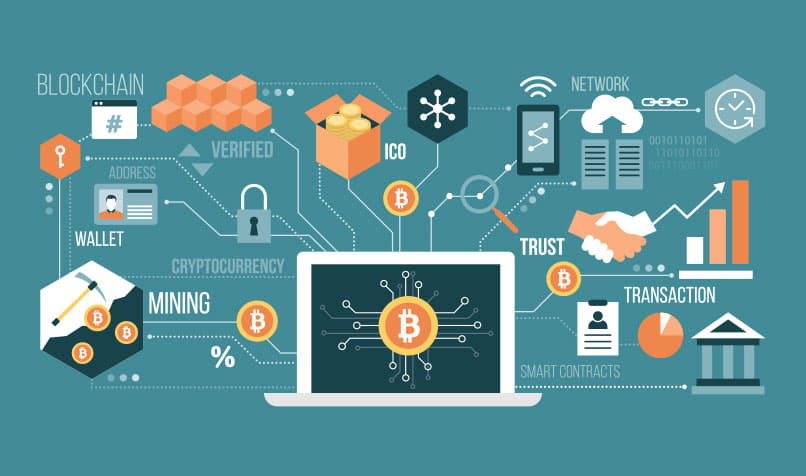In a world where knowledge and information is becoming rapidly decentralized with the internet, skills outside of academics such as effective interpersonal communication are more important than ever. In particular, leadership is becoming increasingly valued by modern day businesses and industries.
Here, four experienced leaders at the Junior Economic Club of Toronto have come together to present you what they believe are the keys to leadership in the 21st Century.
“Strategic Vision and Execution.”
Roger Nath, Chief Strategic Officer at JEC Toronto
As a leader, you must have a focused vision for what your organization wants to achieve, paired with the ability to develop a clear plan to achieve it. Visions usually come in the form of a pain that your organization seeks to alleviate. For instance, the leaders at Junior Economic Club of Toronto seek to level the playing field for youth pursuing a future in the competitive world of finance. In this case, the pain that JEC Toronto seeks to alleviate is the pain that students face in finding equal leadership- and finance-focused opportunities in spite of their socioeconomic or academic backgrounds.
Likewise, you must define the problem that your organization is trying to solve. Who do you target, and what pains will you alleviate? Your team won’t be invested in a cause that isn’t explicitly established. Stepping into the shoes of becoming a great leader begins with defining your vision. Your vision is the foundation for leading your team to accomplish meaningful work within your community.
Once your vision has been established, you must develop a clear and thorough plan of how to achieve it. Which institutions and people must you reach out to? What resources do you currently have, and how will you best use them to your disposal? As a leader, you must be able to work effectively with your team to answer these questions. You must commit relentlessly to carrying out your plan despite any setbacks or obstacles that you face along the way.
“Confidence and Empathy.”
Iris Xie, Chief Marketing Officer at JEC Toronto
A great leader must also have a balance of confidence and empathy. First, believe in yourself. Trust your decisions, and have confidence that things will work out: especially when stepping into new territory like executing the plan for a brand new event or leading your team to reach out to unfamiliar companies or government figures for sponsorships and grants. If you are confident in what you’re doing, your team will seek to reflect that. If you set a high standard for professionalism and productivity through your own work, your team will follow in kind. You must always take it upon your shoulders to be a role model for effective team behaviour, even if you feel momentarily lost yourself. An effective leader inspires confidence in their team members by taking initiative and following through with their plan, head held high.
Next, be empathetic and trust your team members when it comes to their ability to fulfill their duties. Give them as much autonomy as their role and skill level allows, but be there to guide them when it is necessary or when they require support. If they’re faced with challenges or unanticipated obstacles in completing their tasks, be lenient and understanding within reasonable limits. Seek out your team members’ goals and learn what motivates them, and have the ability to do work that makes their jobs easier. Once you learn to be confident in yourself and your team, your team will learn to be confident in you, and they will be motivated to work towards fulfilling your organization’s vision.
“Authenticity.”
Maggie Li, Public Relations Representative at JEC Toronto
Leadership is a form of influence, not authority. The most effective way to influence others on your team to work towards a common goal is by being authentic. Don’t hold yourself against a predisposed idea of how a leader should interact with their team members. Whether it’s adhering to a rigid but uncomfortable standard of formality or trying too hard to maintain an image of authority, people can tell when you’re pretending to be someone you’re not. This creates a barrier which encourages your team members to question what else about you might be inauthentic.
Instead, focus on developing your personal leadership style. Leadership is not about putting yourself on a pedestal; it’s about bringing out the best in those around you. Find out what common interests you might share with your team members outside of your work, whether in sports, books, fashion, or politics. Build rapport and be vulnerable. People are inspired by humans, so show your team that you’re human by being open with your failures and who you are. In response, you will find yourself with a team that feels like a comfortable, tightly-knit community. Your team members will be motivated to complete their work to maintain a positive environment, and they will be more inclined to open up to you about their own difficulties: both within and outside the organization. In this way, being authentic is not only a key to fostering healthy relationships with your team members but also a practical method of uprooting and fixing problems that you otherwise may not be aware of.
“The Ability to Respond to Failure.”
Robert Di Marco, Chief Executive Officer at JEC Toronto
Perhaps the most important ingredient to leadership is the ability to persevere in the face of minor setbacks or severe failures. The reason why many people are unable to lead in the first place is because they are afraid to make mistakes. Don’t be afraid to make mistakes; leadership is not about being perfect.
It is always easy to take a risk and see it pay off in short term success. However, much like investing money in an account with compounding interest, leadership is a commitment which requires patience and perseverance. You will only be successful in the long term because of your ability to face failure and learn from your mistakes. This is easily said, but not done, as you risk tarnishing your reputation as a result.
Take Elon Musk as an example. Regardless of whether he’s recognized as CEO of Tesla and SpaceX or the man who smoked a joint on the Joe Rogan Podcast, his success is undisputed. However, most people do not recognize his incredible history of failures. In 1996, he was ousted as CEO of his own company, Zip2. In 1999, his first PayPal product was voted as one of the ten worst business ideas. In 2006, his first $6.7 million SpaceX rocket exploded within a minute after launching, followed by five critical launch failures within the next ten years. And in 2008, both Tesla and SpaceX were on the brink of bankruptcy.
Yet, in spite of numerous expensive and reputation-damaging setbacks, Musk continued to pull millions of dollars out of his own wallet to invest in his companies, persevering to see his ambitions to success. Today, Tesla is a global leader in electric car production, whereas SpaceX has become the pinnacle of humanity’s hope towards becoming an interplanetary species. Musk’s spectacular list of failures demonstrates that to create true, lasting change, leaders must persevere through hardships even when the odds are not in their favour.
Correspondingly, you must learn to work for long term goals rather than short term satisfaction. To be a great leader, you must learn to take calculated risks and be prepared to face outcomes that are not favourable. Instead of being dissuaded into giving up, treat forthcoming obstacles as motivators for success. Use your failures to drive you and your team to achieving your vision.






















